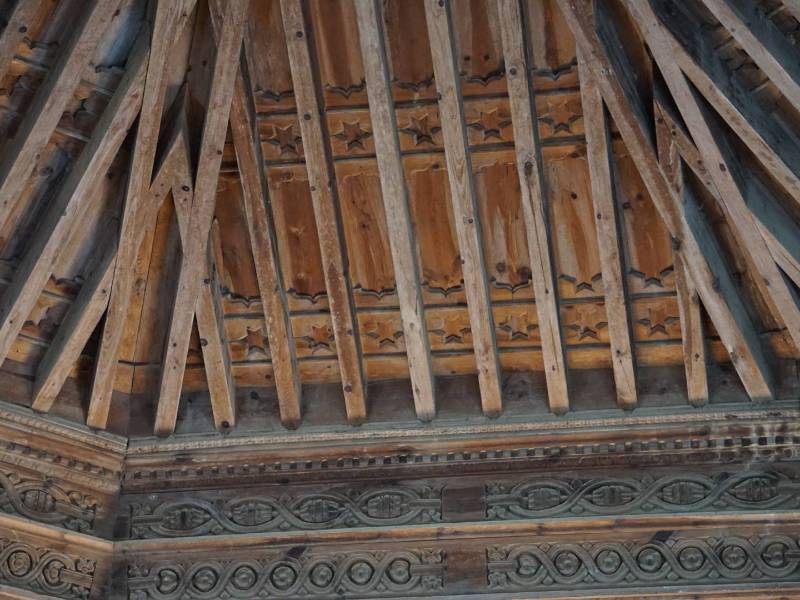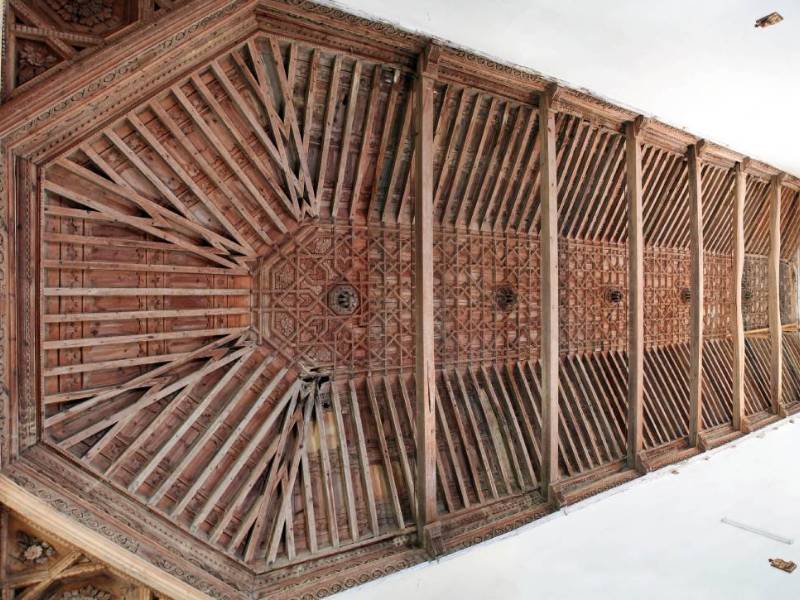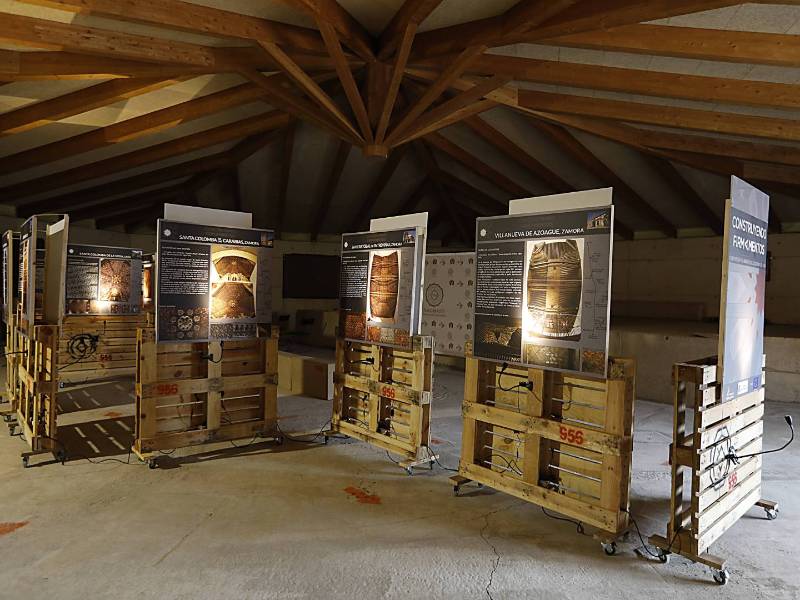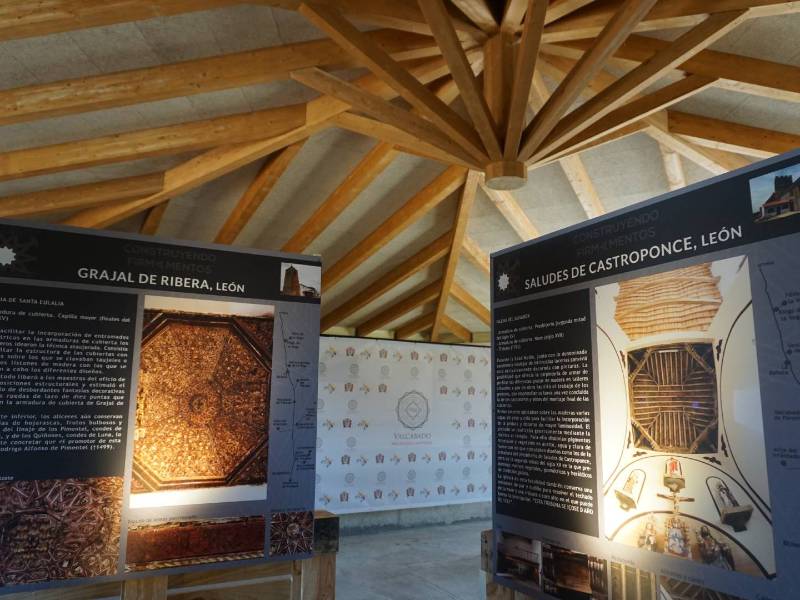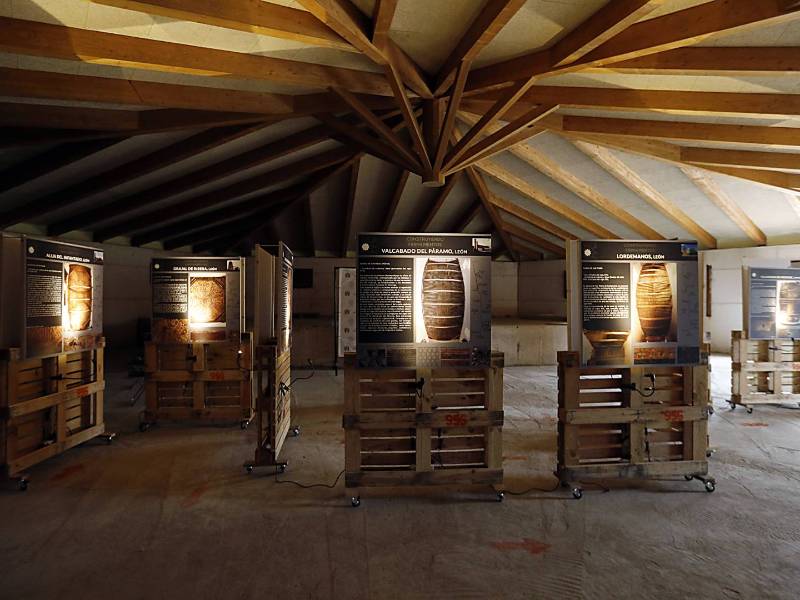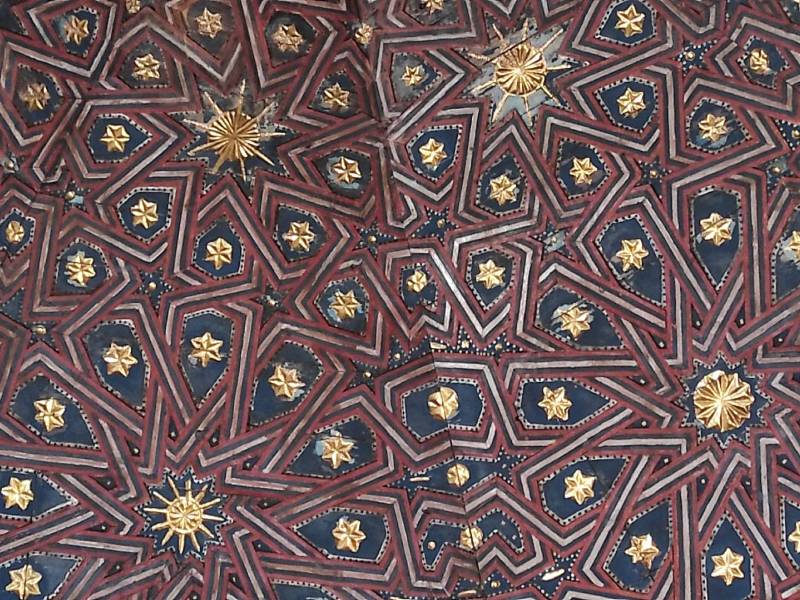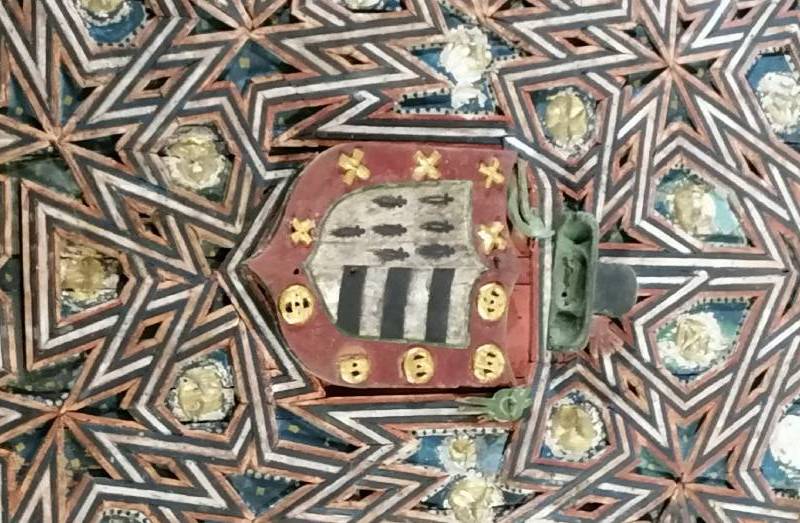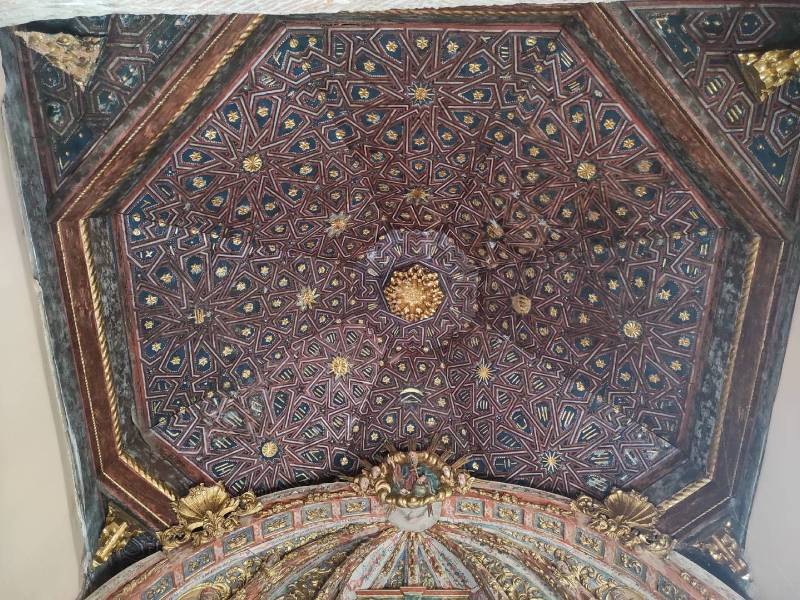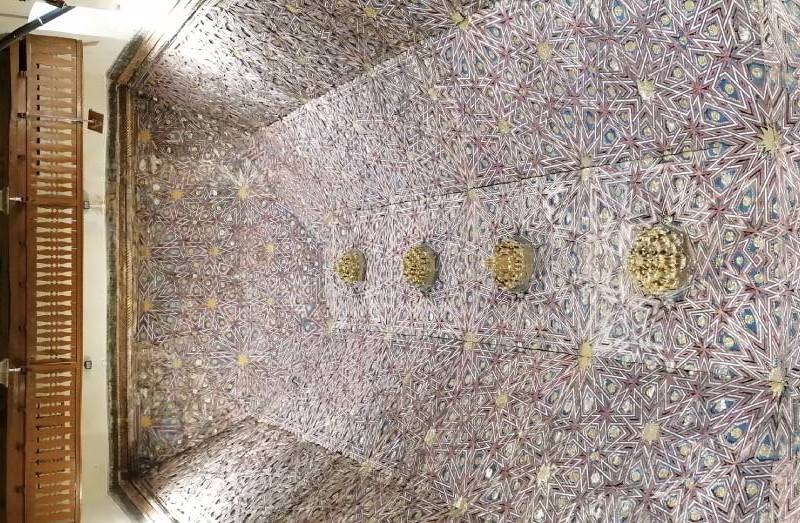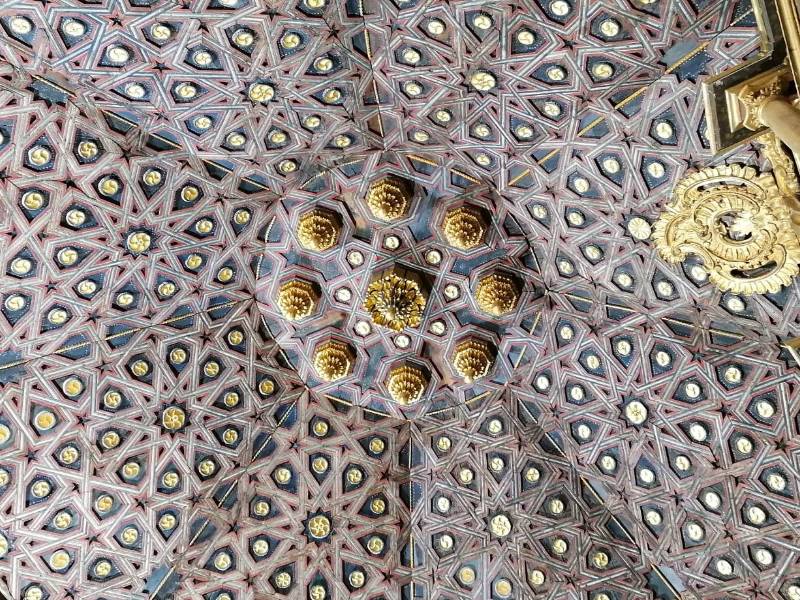Route of the Mudéjar Craftsmanship in the Vía de la Plata
- Position
- Leon province
- Zamora province
Castilla y León stands out for being the Autonomous Community that concentrates the largest number of roof trusses, and the south of the province of León has an unequaled wealth in coffered ceilings. The unknown Mudéjar jewels distributed throughout the west of León, in turn structured by that Hispanic communication corridor that is the Vía de la Plata, is the leitmotif of this initiative that was born under the cover of a patronage campaign to restore the coffered ceiling of the church of Santiago in Valcabado del Páramo. A project that has shown the institutions that the small and unknown heritage can have that dynamic element that inland cultural tourism requires.
A total of thirteen Mudéjar pieces, each with its own register, each with its personal intrahistory, decorate this Mudéjar route that is structured around the Vía de la Plata, crossing the north of the province of Zamora and the west of the Province of León.
There is no doubt, therefore, that the Hispanic Middle Ages is clearly influenced by the material and immaterial culture of al-Andalus. Their tastes and customs decorate a landscape of coexistence that eventually continues to this day under the protection of a clearly Hispanic-Muslim marriage. And all this is channeled through this route and with it the exhibition "Carpentry to build on the Vía de la Plata", a contribution from the Junta de Castilla y León to the project. A didactic tour through the singularities of our coffered ceilings, culminating in a video that advocates for awareness and appreciation of the heritage of that Nasrid art that, contributing to the development of Mudéjar art, today shines in our Leonese skies.
The polychrome lacework acquires its maximum expression with promotional contributions such as that made by Juan González de Zamora, canon of the Cathedral of León, to the armor of Santa Colomba de la Vega (jewel in the crown of this route; with its domed appearance, symbolically creating a celestial vault); whose heraldic shield appears on one of the skirt of the piece. The lasso wheels that decorate the presbyteries of Azares del Páramo and Mayre de Castroponce are not far behind.
What to see?
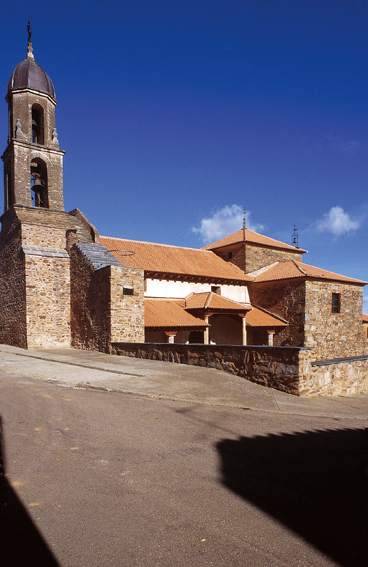 Church of San EstebanMore information
Church of San EstebanMore informationThe church was built in the XV century. Of Templar origin, the building has a beautiful coffered ceiling, jewel of the Mudejar style of the XVI century. In this temple, that stopped to be a parish in 1896,...
 Church of Santa EulaliaMore information
Church of Santa EulaliaMore informationTo facilitate the incorporation of geometric frameworks in the roof reinforcements, the carpenters devised the ataujerada technique. It consisted of hiding the structure of the roofs with boards on which...
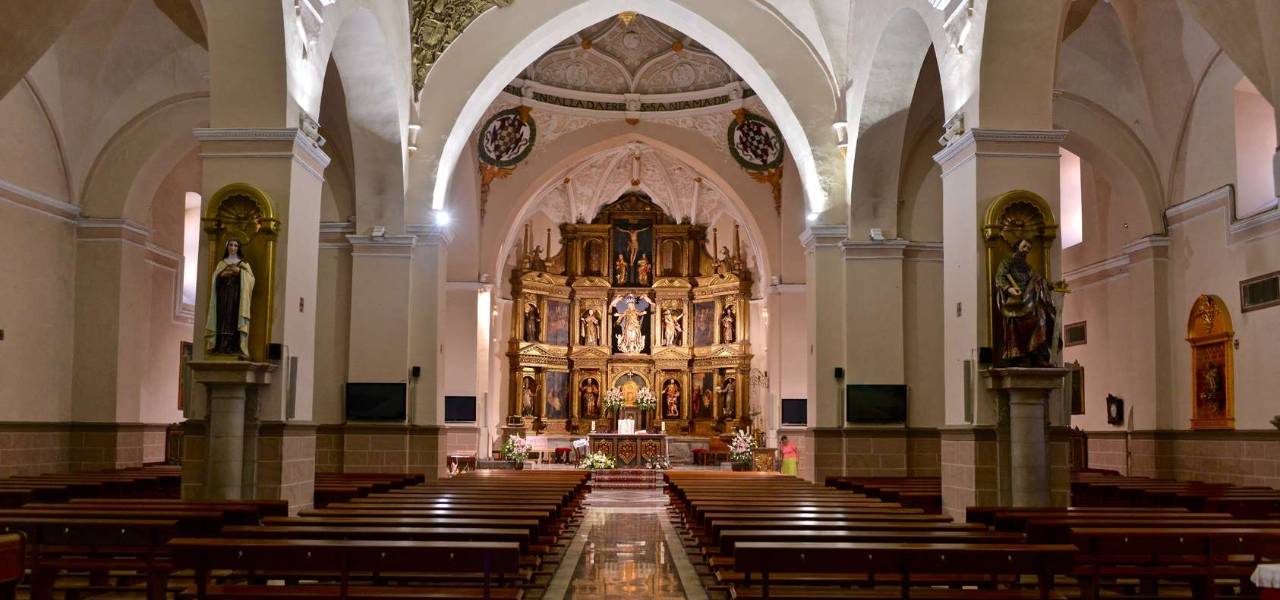 St. Mary's ChurchMore information
St. Mary's ChurchMore informationUpon entering the church of Santa María de La Bañeza, no one can imagine the wooden treasure that is hidden behind the vault of its central nave. And since the Baroque arrived in the Spanish arts in the...
 St. Peter's ChurchMore information
St. Peter's ChurchMore informationThe church of San Pedro de Lordemanos is presented as a magnificent testimony of the possibilities that carpentry offered for assembly and its adaptation to different needs and uses. In addition to the...
 Church of the SaviorMore information
Church of the SaviorMore informationDuring the Middle Ages, along with the so-called Mudejar carpentry of intricate lacework, there coexisted another exclusively decorated with paintings. The possibility that carpentry offered to profile...
 Church of Our Lady of CañoMore information
Church of Our Lady of CañoMore informationThe most complex way to incorporate lacework into the deck armor was through the combed technique. The procedure was based on composing geometric designs with the construction elements of the roof, so...
 St. Felix ChurchMore information
St. Felix ChurchMore informationThe 17th century marked the beginning of the slow decline of assembly carpentry, as Diego López de Arenas bitterly recalled in his Brief compendium ofwhite carpentry printed in Seville in 1633: "bad apprentices...
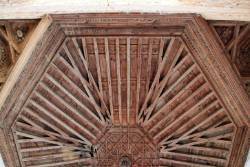 Church of Santiago ApóstolMore information
Church of Santiago ApóstolMore informationThe master carpenters carried out their trade on an itinerant basis. Accompanied by the officers and apprentices of their workshop and provided with their work tools, they traveled to the different destinations...
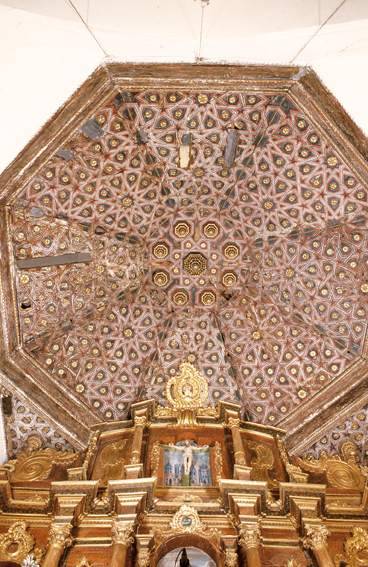 Church of Santa Colomba de la VegaMore information
Church of Santa Colomba de la VegaMore informationChurch with mudéjar coffered ceilings from the 14th / 15th century that covers both the single nave and the main chapel, with an exuberant geometric decoration formed by loop wheels and striking paintings....

